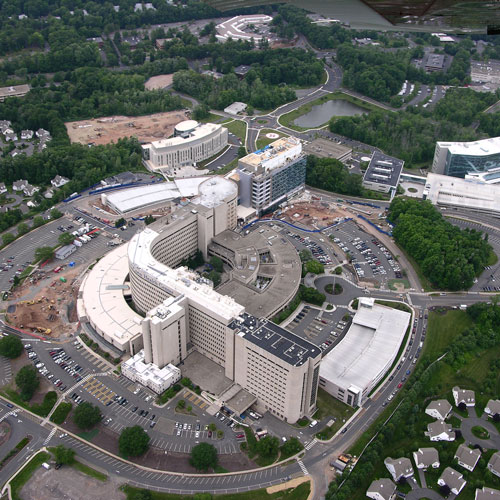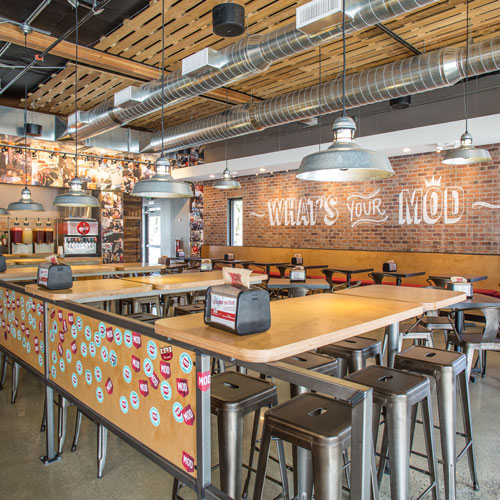Already known for fine dining, hot-spot nightclubs, and luxury lifestyle hotels, Los Angeles-based sbe Entertainment Group decided in 2015 it was time to turn its real estate development business into its own entity. The result was Dakota Development.
As vice president of design and construction for the sbe subsidiary, Jason Cruce has his hands in multiple ongoing projects, and constantly is on the move. Even when we talk to him about the many SLS Projects underway, including SLS Seattle—expected to open in early 2017—Cruce is en route from Los Angeles to his newest project in Palm Springs, which will be a 400-unit Hyde resort.

Cruce started his career with RTKL Associates in 2003. It was while working on the renovation of the historic Sahara in Las Vegas that he met sbe CEO Sam Nazarian.
“Sam and I hit it off and he hired me to work for sbe and lead the SLS Beverly Hills project,” Cruce says. After completing SLS Beverly Hills, Cruce bolstered his expertise in luxury and lifestyle brands while working as director of programming and planning for Hilton Worldwide, which led him to start Crescent Consulting Collaborative. Cruce’s consulting company took on everything from project management of hospitality projects to helping develop facility master plans. Eventually, his career path wound its way back to sbe.
SLS Hotels and Hyde Hotels now consume most of Cruce’s time. He is leading the charge on SLS Seattle and collaborating with Daniels Real Estate to complete The Mark, a 46-story high-rise located at 5th and Columbia in downtown Seattle. The newest addition to the SLS brand will be the tallest building built in Seattle within the last two decades, but also integrates a historical church into the property, which will be converted into two event spaces.
“It’s completely unique space to Seattle and will be ‘the’ place to have an event,” Cruce says.

SLS luxury hotels can currently be found in Beverly Hills, South Beach and Las Vegas. However, its portfolio of cities will soon expand to include New York, Philadelphia, Washington, DC, Cancun, and Cabo San Lucas. SLS hotels, Cruce says, aren’t “your grandparents’ Four Seasons.” He adds that he’s focused on bringing modern luxury, rather than “oppressive luxury.”
“It’s all about providing service in a luxurious environment, but we haven’t forgotten that life is about living as well,” Cruce says. “You have to maintain a bit of playfulness.”
SLS New York is a renovation of a postwar office building that will be converted into a 190-room hotel, located north of Madison Square Park on Park Avenue South, a trending spot for chic hotels. Although it’s not a new building, the conversion isn’t simple.
“We shaved 10 feet off the side of the building, and reconfigured the structure of the building to add space to the top,” Cruce says. “It was a full gut. We really got our start in the reuse of older buildings, so it’s good to get back into that.”
This will be sbe’s second New York property, after the conversion of the former Martha Washington Hotel into a Redbury in late 2015. Dakota Development is working in partnership with Moinian Development and designer Philippe Starck. The hotel is expected to feature a destination restaurant, a basement lounge that essentially reinvents Hollywood’s S Bar, and both an indoor and outdoor lounge on the 14th floor.
SLS is known for modern design and luxurious amenities, but Cruce emphasizes that each SLS hotel has its own personality. SLS Beverly Hills lives up to the lavishness of the zip code with cotton candy foie gras, sleek furniture, and a picturesque lookout atop the Altitude Pool Deck. SLS South Beach, meanwhile, fits right in with the party atmosphere of Miami. The Art Deco-inspired 140-room property is known for drawing in A-list celebrities and has been ranked among the top 10 party hotels in the United States by USA Today and The New Yorker. However, Cruce notes one similarity found in all SLS properties: prime location.

“We’re looking for that A-class destination,” he says.
When working on Hyde Hotels and Residences, Cruce has to consider a different type of clientele. For Hyde Hotels, he considers the average patron to be a savvy traveler with the experiential aspects of traveling in mind.
“We’re looking into up-and-coming areas that are younger and filled with more artistic and creative residents, who aren’t necessarily less business-driven, but are definitely more socially connected than your typical guest and want to be a part of their environment,” he says. Dakota Development has been scouting out cities to fit this brand and have their eyes set on Austin, Chicago’s West Loop, Los Angeles’ Arts District, and Nashville.
Another undertaking for Dakota Development is its new residential focus.
“Sam [Nazarian] is keen on developing residential properties and we have looked into a number of high-end homes in prime markets to reposition them,” Cruce says. “There are a number of existing properties out there that just need the right vision and a little work done. It’s surprising the amount of value that can be added relatively painlessly.”
The company also has substantial residential work experience with its sbe-branded condominiums and villas.
Regardless of whether he is working on a SLS or Hyde project, Cruce keeps the Dakota Development mantra in mind.
“Every square foot should generate revenue,” he says. “You go into some luxury big box hotels and there is a lot of space in the lobbies and courtyards that add to the architectural appeal but never generate revenue. We want our spaces to deliver a return to our owner 100 percent of the time.”


